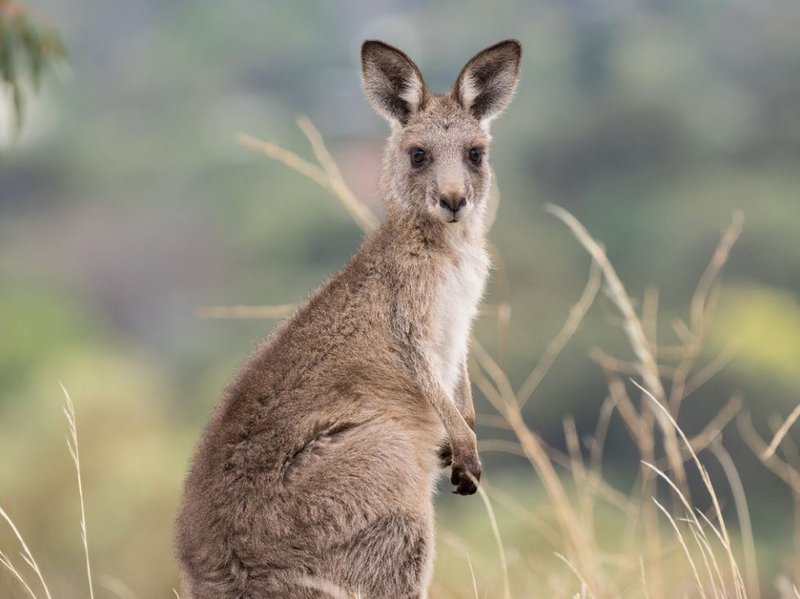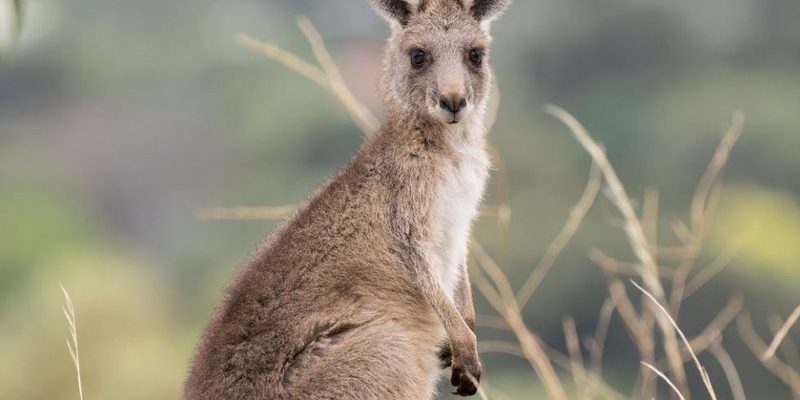
Understanding how the Eastern Grey Kangaroo survives in tough situations is like peeling back the layers of a complex onion. It’s not just about their physical attributes but also their behaviors, social structures, and clever adaptations. Let’s dive into the various ways these amazing animals tackle life in the wild!
Physical Adaptations for Survival
You might have noticed that kangaroos have incredibly strong hind legs. This isn’t just for show; it’s a key part of their survival toolkit. With their legs, Eastern Grey Kangaroos can leap over long distances—up to 3 meters in a single bound! This ability helps them escape predators quickly or navigate through harsh terrains.
Their tails play an equally important role. Think of the tail as a kangaroo’s balancing pole. When they hop, they use it to help stabilize their body, especially on uneven ground. This balance allows them to travel great distances in search of food and water, which are often scarce in dry climates.
Additionally, their bodies are built for efficiency. Eastern Grey Kangaroos have large, muscular hindquarters, which provide the power needed for powerful leaps. Their unique adaptations make it easier for them to traverse their tough environments, helping them survive where others may struggle.
Drought Resistance and Water Conservation
Living in areas where water can be a luxury, Eastern Grey Kangaroos have developed some remarkable strategies. They can survive for long periods without drinking water, thanks to their efficient kidneys, which conserve water effectively. This means that during droughts, they don’t need to rely on external water sources as much.
In fact, they often get enough moisture from the grass and plants they eat. When food is scarce, they switch to more moisture-rich vegetation, which helps keep them hydrated. Isn’t that impressive? They’re like nature’s water-saving whizzes!
Moreover, Eastern Grey Kangaroos often feed during the cooler parts of the day, like early mornings and late afternoons. This behavior reduces their water loss through evaporation, a smart survival tactic when temperatures soar.
Social Structures and Group Behavior
Kangaroos are social animals, often found in groups called mobs. This social structure provides a crucial survival advantage. When in a mob, there’s safety in numbers. The kangaroos can keep an eye out for each other, alerting one another to the presence of predators like dingoes or eagles.
Mobs can also provide warmth during the cold nights. When temperatures drop, kangaroos huddle together, using each other’s body heat to stay warm. It’s heartwarming to think of them snuggling up together, isn’t it?
Additionally, being part of a group allows young kangaroos, or joeys, to learn from older members. They mimic their elders’ behaviors, refining their survival skills for the future. This passing down of knowledge is vital for thriving in a harsh environment.
Feeding Strategies for Tough Times
Eastern Grey Kangaroos are primarily herbivores, munching on grasses, leaves, and shoots. But when the going gets tough and food becomes scarce, their feeding strategies reveal how adaptable they are. They are picky eaters, to an extent, choosing a variety of plants to ensure they get the nutrients they need.
Interestingly, they have an ability to detect and prefer nutrient-rich plants. This instinct helps them find food that satisfies their dietary needs, even in limited conditions. Think about it like this: they’re like savvy health-conscious eaters, even in the wild!
When food sources dwindle, they can slow down their metabolism, a bit like hitting the pause button on their body’s energy use. This ability helps them survive on less food for longer periods, making the most of what’s available.
Behavioral Adaptations to Climate Extremes
Behavior also plays a critical role in the survival of Eastern Grey Kangaroos. For instance, they’re crepuscular, meaning they are most active during twilight. This behavior helps them avoid the extreme heat of midday, reducing the risk of overheating and water loss.
In harsh weather, they can be seen seeking shelter under trees or in the shade. This simple behavior helps protect them from the sun and conserve energy. It’s almost like they have their own built-in air conditioning!
Furthermore, when the seasons change, so do their behaviors. During winter, they might shift their feeding habits to more fibrous plants, which are often higher in nutrients. This adaptability to changing climatic conditions is vital for long-term survival.
Understanding Predators and Threats
One of the biggest challenges for Eastern Grey Kangaroos is avoiding predators. Though they are quite capable of defending themselves, they rely heavily on their agility and speed. When faced with danger, they can leap away quickly, often using their powerful legs to cover ground fast.
To stay safe, they also use their keen sense of hearing and smell to detect threats. You might picture them standing still, ears perked up, listening for any signs of trouble. This awareness allows them to react swiftly to potential dangers.
In the harsh environments they inhabit, human activity poses additional threats. Habitat loss, road traffic, and hunting can all impact their populations. Understanding these threats helps us appreciate the resilience of Eastern Grey Kangaroos and the challenges they face.
The Role of Eastern Grey Kangaroos in Their Ecosystem
Kangaroos aren’t just surviving; they play a vital role in their ecosystems. By grazing on grasses, they help maintain the health of the vegetation. This grazing prevents overgrowth and promotes the growth of a variety of plant species.
Additionally, their droppings serve as natural fertilizers, enriching the soil and promoting new plant growth. This cycle of grazing and fertilizing is essential for maintaining the balance in their habitat. Think of them as nature’s gardeners!
Their presence in the ecosystem also supports other wildlife. Birds and smaller animals benefit from the plants that grow in healthier environments due to the kangaroo’s grazing habits. It’s a beautiful cycle of life, showcasing how interconnected all species are.
Eastern Grey Kangaroos are true masters of survival, thriving in harsh environments through their physical adaptations, social behaviors, and clever feeding strategies. They remind us that resilience can take many forms—from strong legs that leap into action to social structures that provide safety in numbers.
As we continue to learn about these incredible animals, let’s appreciate their role in the ecosystem and acknowledge the challenges they face in a world of constant change. The next time you think of kangaroos, remember: they’re not just hopping around; they’re navigating the ups and downs of survival in some of the toughest environments on Earth.

